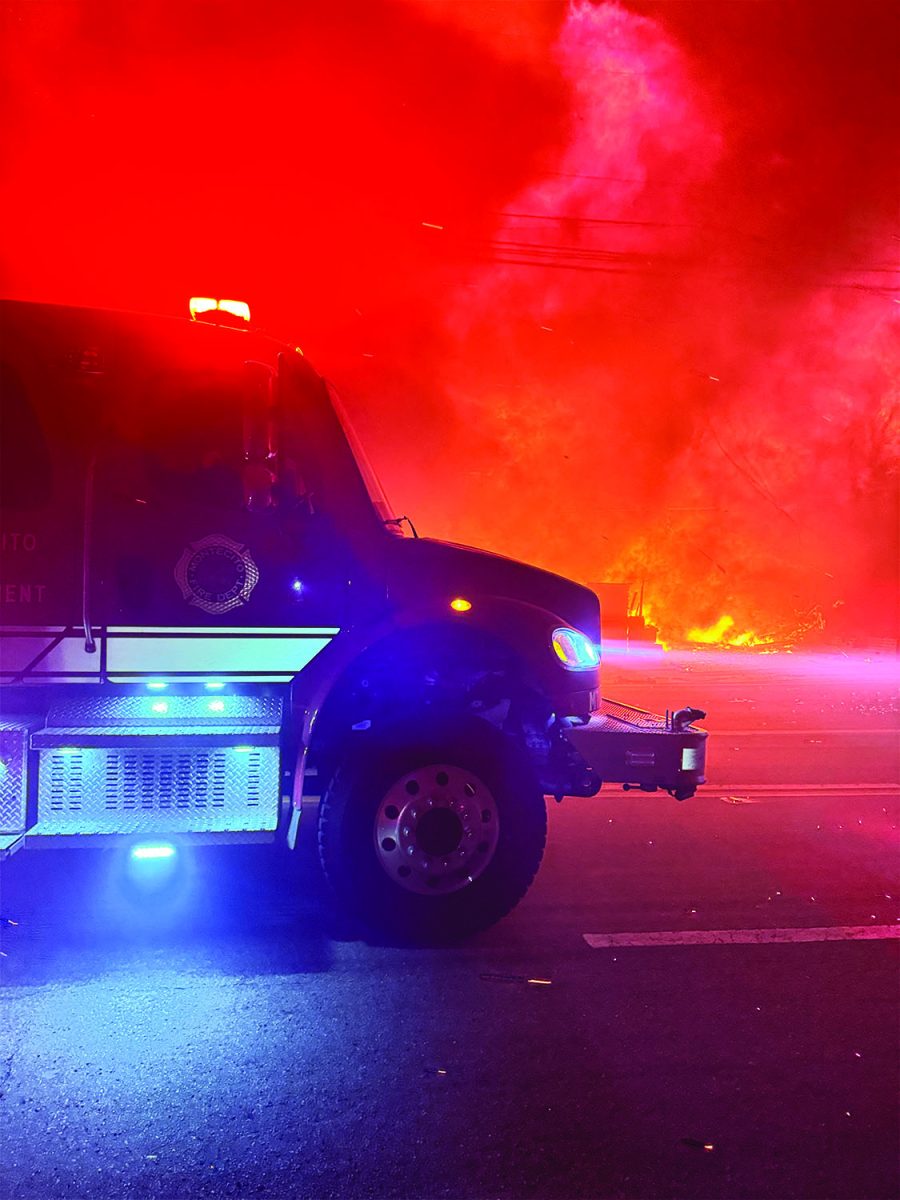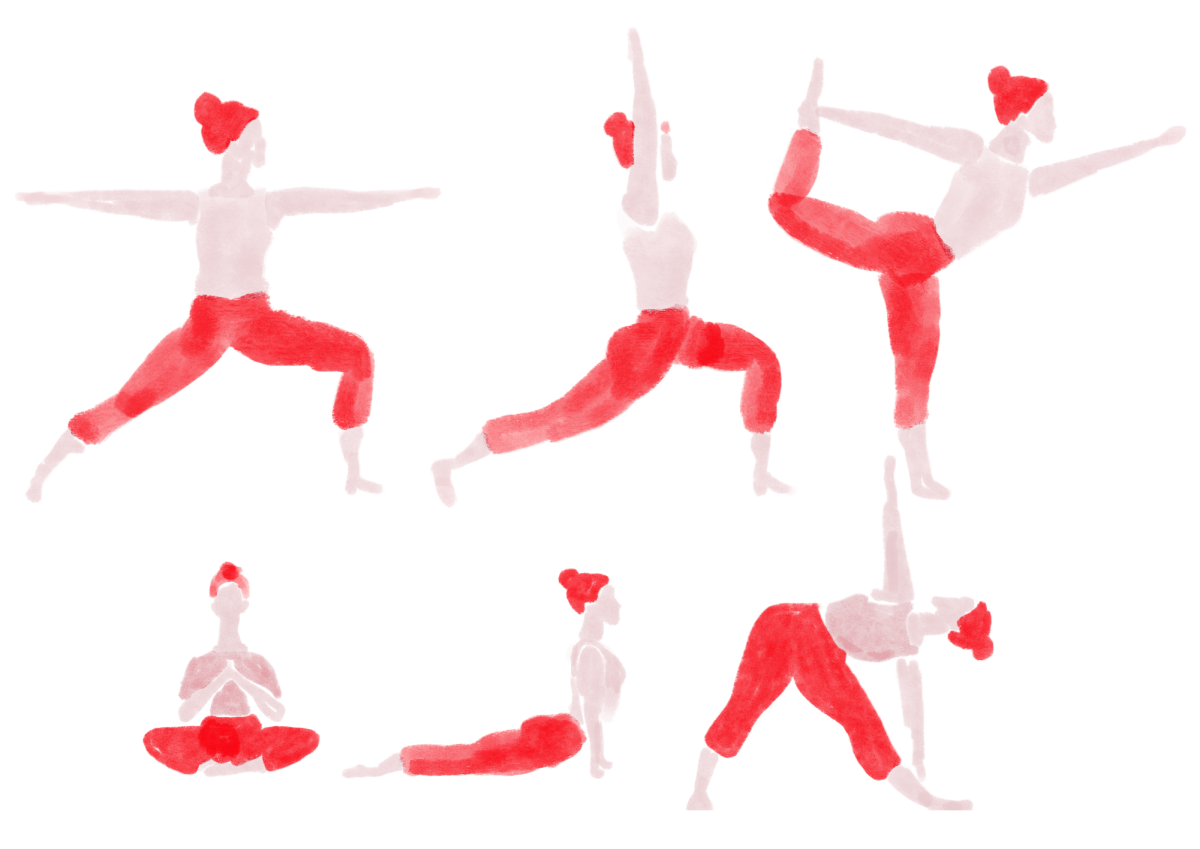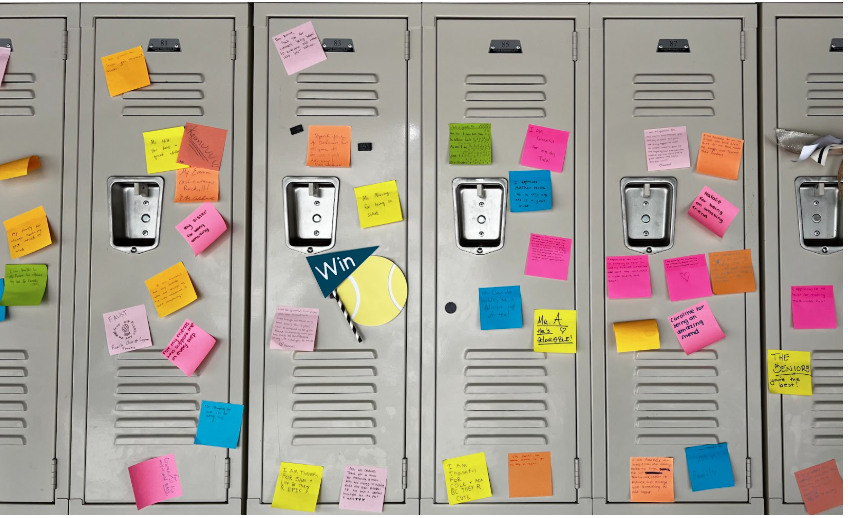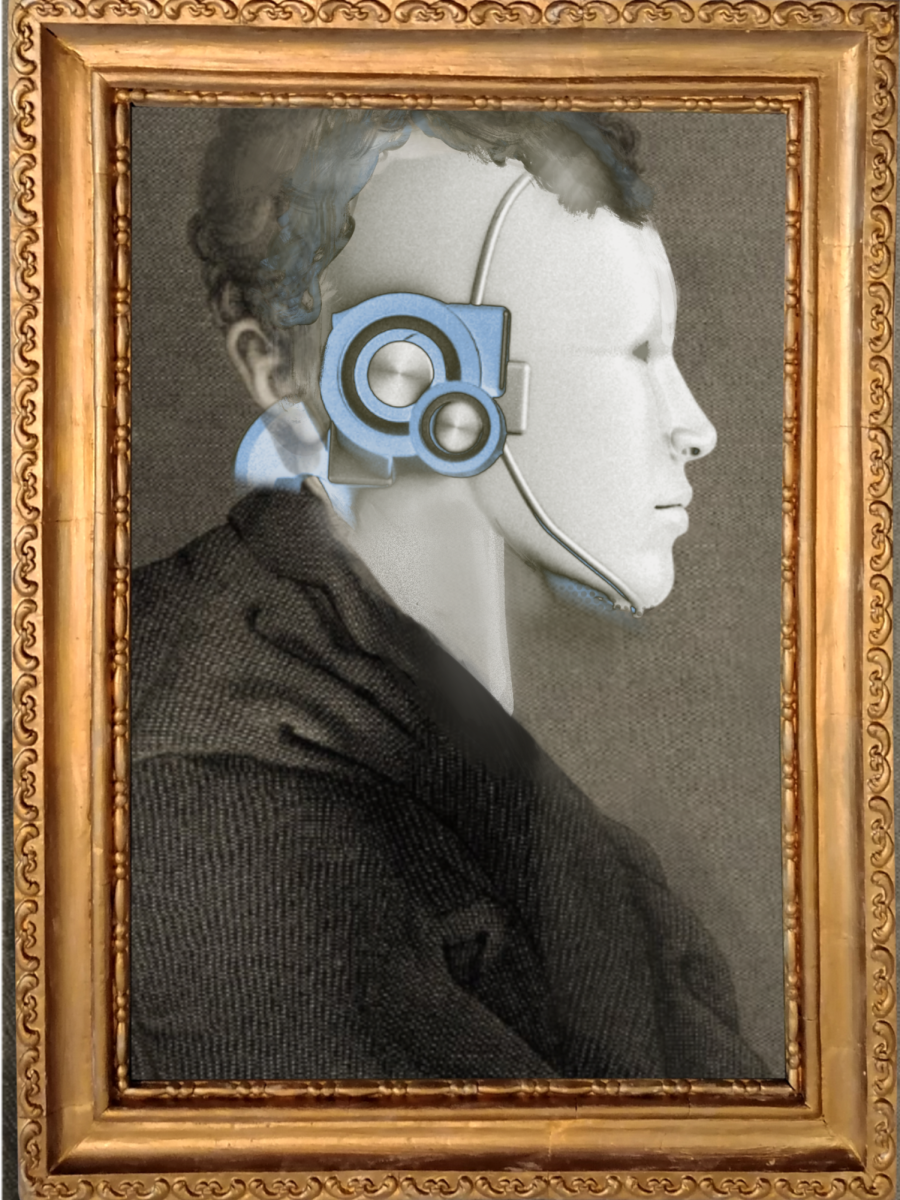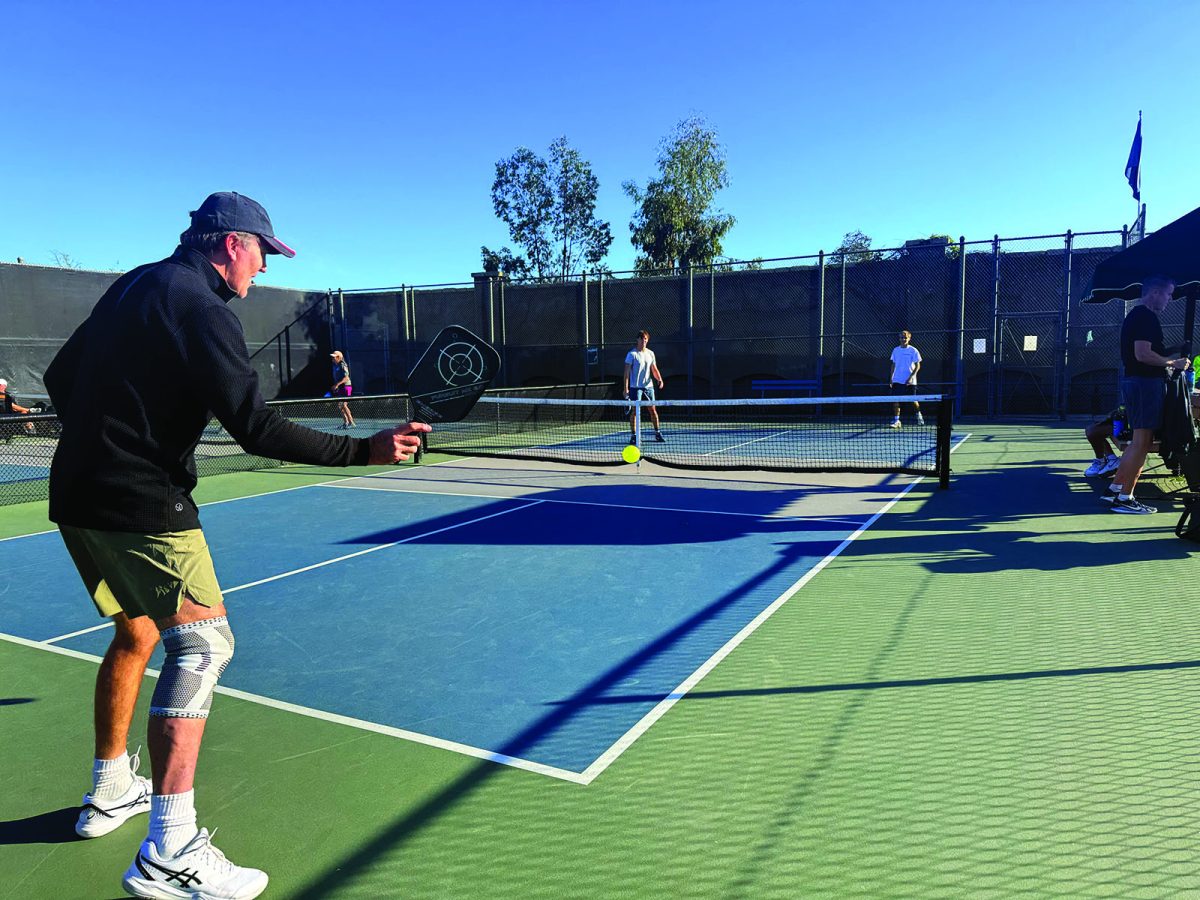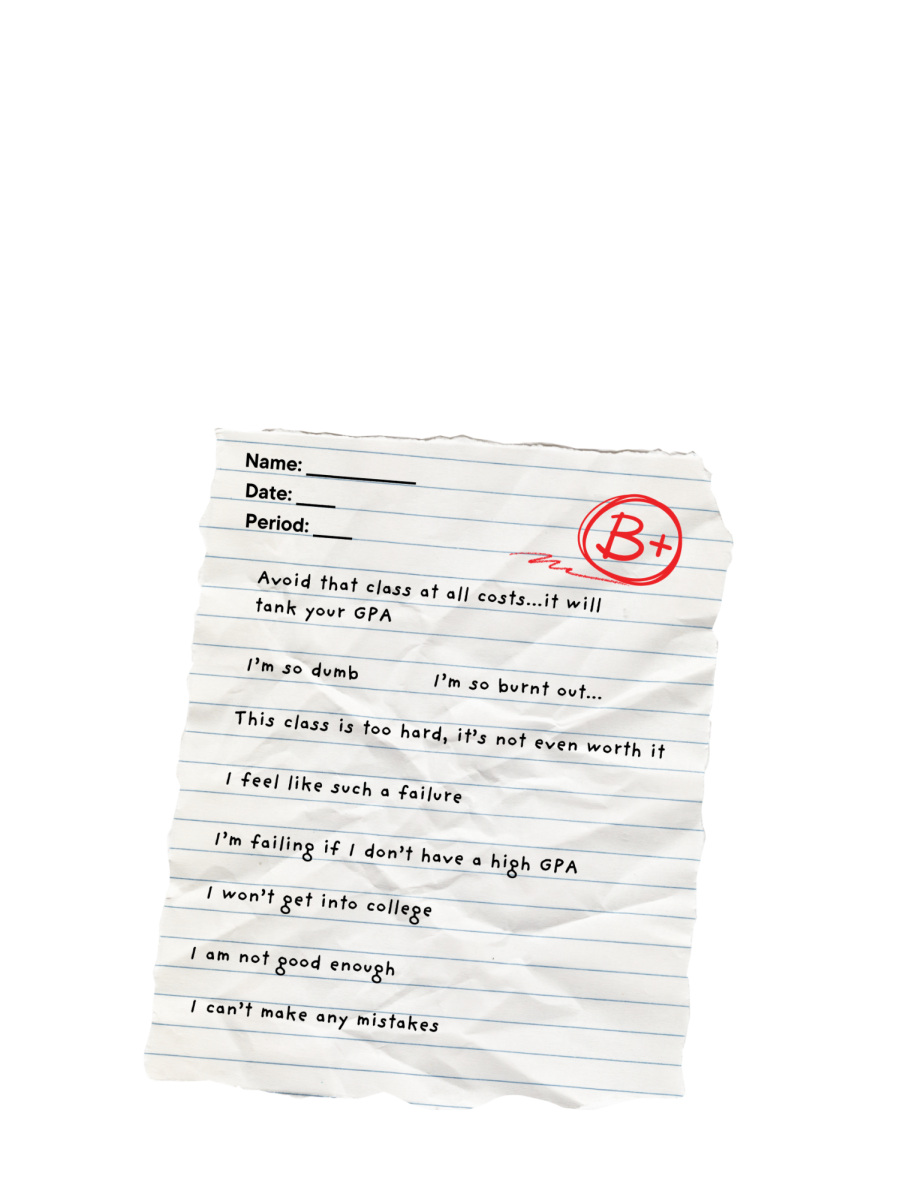What could possibly be the benefits of being in a 95-degree room for an hour, surrounded by 75 people, humidity blowing at full force, and moving and breathing through it all?
Hot yoga, specifically CorePower Yoga, has taken upper school students by storm. I should know—I teach there.
Every week, I go to yoga after school with my friends. Not only is it one of the highlights of my own day, but my friends’ days too.
Senior Dania Zamudio is a regular at CorePower Yoga and my classes.
“What I love about yoga is that it has become my time to relax and recharge while still being with my friends. Before class I love trying new inversions, cheering each other on, and laughing when we fall,” Dania said. “Yoga has become more than just exercising, it has become a place where we can support each other and make every session more meaningful.”
Practicing yoga is on fire. Every shift I work, I see more and more people my age coming to take a class.
When I was younger, yoga was something my mom tried to make me do. Now, I willingly teach and take classes multiple times a week.
However, the nature of yoga is more than just a trend. Yoga is not about burning calories, wearing a matching set, or even breaking an intense sweat.
Through my experience of going through a 250-hour yoga teacher training program over the summer, and teaching my classes at CorePower, I have learned that yoga is more than just moving your body in a sweaty room.
In fact, during my teacher training, I spent almost 200 hours reading, writing, and studying the history of yoga, in addition to practicing the postures. I learned that there is so much more to yoga than meets the eye, and so many benefits beyond the physical advantages.
Yoga bridges the gap between movement and feelings.
In yoga, you sit with yourself, diving deep into the sensations in your body. You are forced to breathe through the heat, the humidity, and through the postures.
Yoga teaches you to use different breaths to calm or excite your nervous system.
“Before I started practicing yoga consistently I felt as though I had anxieties I didn’t know how to deal with,” said Payton Wilson, CorePower La Cumbre Studio Manager.
Yoga forces you to breathe and lean into the uncomfortable, and different types of breath can be used to do this. Even when teaching, I feel my whole body relax from my breath alone.
The Ujjayi breath is used to build internal heat; the same is true of the breath of fire, which increases alertness in the body. Learning to breathe as a high school student is a crucial skill that sets us up for success in regulating our bodies. Yoga also connects your mind and body.
When it comes to exercise, we often tell our mind to “push, push, push!” Pushing past discomfort and our bodies’ warning signs.
In yoga, you are encouraged to listen to your body. You put yourself in uncomfortable positions and sit in them, breathing, being gentle with yourself, but listening to how your body responds.
There is no one way a posture is supposed to look, and students are told to take all and any modifications they may need. Yoga is about you, your needs, and your practice.
Al Silva, a member of the academic services group and yoga instructor at Yoga Soup said his favorite part about yoga is its ability to silence your mind. In yoga you sit with your thoughts, you notice them, and then you release them.
“Not letting the negative thinking or even the positive thinking take over,” is essential to yoga, Silva said.
Yoga has also given Silva a sense of perspective. “I am able to see how reactive I was…I do feel more grounded in terms of my mental and emotional states,” Silva said.
Aside from the Asana, or physical practice, there is a lot that can be learned from yoga’s founding principles. In fact, physical postures are just one part of yoga.
The eight limbs of yoga each describe different aspects of the yoga practice.
In order, there is the Yama (moral discipline), Niyama (observances), Asana (physical postures), Pranayama (breathing techniques), Pratyahara (sense withdrawal), Dharana (concentration), Dhyana (absorption or meditation), and Samadhi (enlightenment or bliss).
Dharana, or concentration, is critical. In yoga, you are forced to concentrate, and balance flowing and moving.
Yoga also teaches you how to concentrate off the mat.
“In my day-to-day life, I’ve started to be a lot more engaged with the task I am doing,” Wilson said.
By following these eight limbs, a yogi is supposed to reach full enlightenment and self-realization.
The yamas and niyamas are the moral codes of yoga. You take them off your mat and into the community around you.
Yama is often translated from Sankrit as “moral vow,” and the five yamas encourage yogis to act kindly not just to others, but also to themselves.
The five yamas are Ahimsa (non-harming or non-violence), Satya (truthfulness), Asteya (non-stealing), Brahmacharya (celibacy or ‘right use of energy’), and Aparigraha (non-greed or non-hoarding).
Niyama is often translated as “observances” and are recommended habits to help the yogi reach enlightenment. The five niyamas are Saucha (cleanliness), Santosha (contentment), Tapas (discipline), Svadhyaya (self-study), and Isvara Pranidhana (surrender).
Tapas, in particular, is one of the main principles at CorePower. Students take 90+ degree heat classes to force themselves to build discipline and sit in their own discomfort.
“Yoga has allowed me to be better at being uncomfortable. Yoga widens our window of tolerance of what we can accept,” Wilson said.
The yamas and niyamas encourage students to take their yoga off their mat, live their yoga, and share it with others.
There is so much that can be learned from yoga past the physical space on the four corners of the mat.
Yoga teaches us how to feel, breathe, sit through the uncomfortable ground, become the best versions of ourselves, and brings us back to the present moment.
“Practicing, I learned how to experience what was happening in the moment rather than thinking about what was going to happen,” Payton said.



